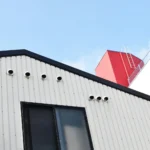Land Acquisition and Preparation
Cost of Land
The first major cost to consider when building a self-storage facility is the cost of land. The price can vary greatly depending on the land’s location, size, and zoning. It’s important to conduct a thorough market analysis to determine the best location for your facility, taking into account factors such as population density, demand for storage, and competition in the area.
Remember, land cost is not just the purchase price. You also need to factor in the costs associated with site preparation, such as clearing, grading, and soil testing. These can add significantly to the overall land acquisition cost.
Site Preparation
Once you’ve acquired the land, the next step is preparing it for construction. As mentioned earlier, this involves clearing the land, grading it for proper drainage, and installing utilities.
Depending on the condition of the land, you may also need to invest in soil stabilization or environmental remediation.
The cost of site preparation can vary widely, depending on factors such as the size and condition of the land, local labor rates, and the complexity of the work required.
It’s important to get a detailed estimate from a reputable contractor to ensure you budget accurately for this phase of the project.
Did you know?
Steel self-storage buildings, also called mini-storage buildings, are among the most popular commercial buildings erected today.










